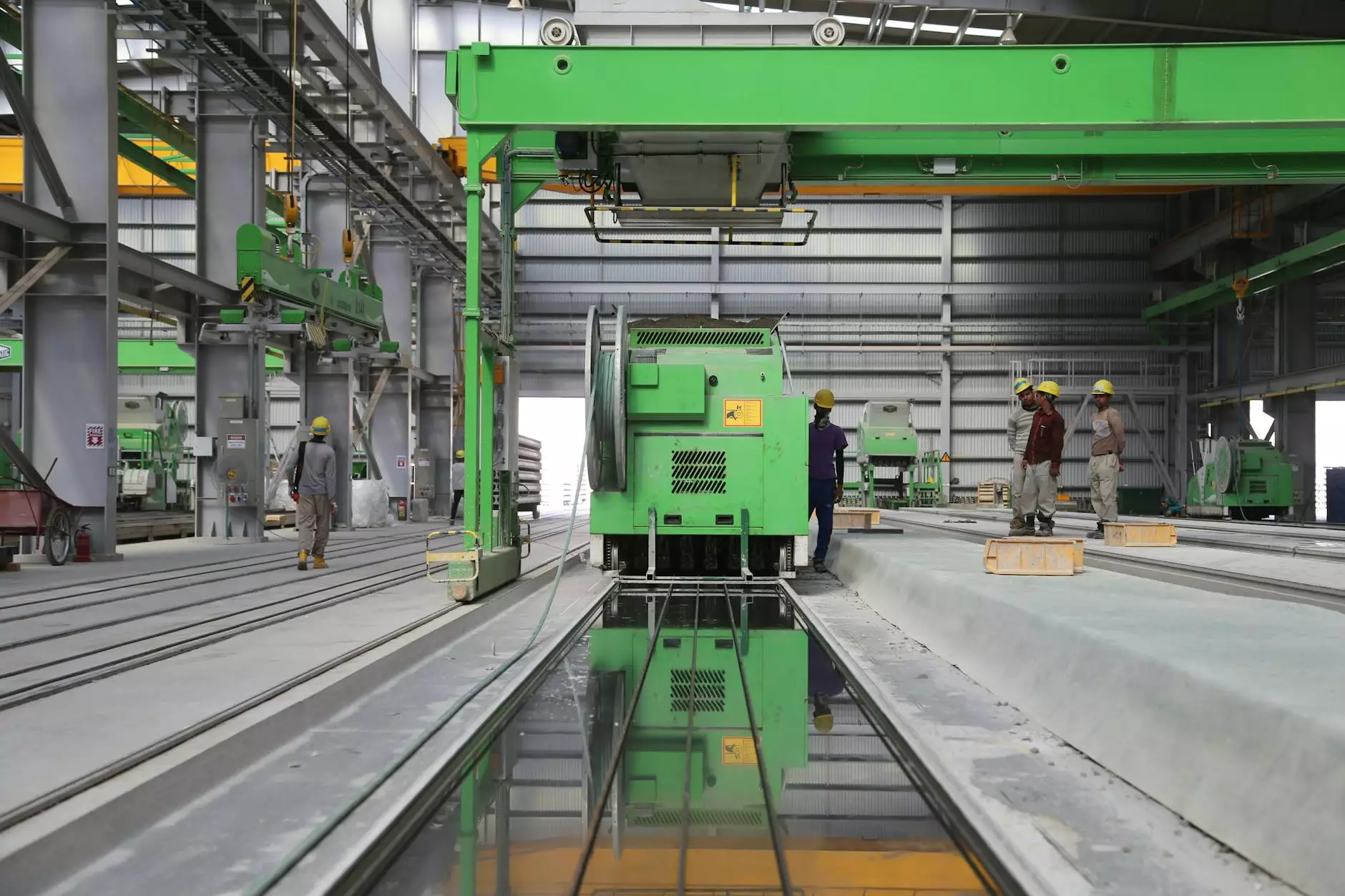Comprehensive Guide to Pool Refinishing Options: Enhance Your Pool's Appearance & Durability

A well-maintained swimming pool not only elevates the aesthetic appeal of your property but also provides a refreshing retreat for relaxation and exercise. Over time, however, pools experience wear and tear, leading to issues such as surface deterioration, staining, and structural damage. To preserve your investment and ensure your pool remains inviting, understanding the various pool refinishing options is essential.
Understanding the Importance of Pool Refinishing
Pool refinishing is a critical maintenance process that involves restoring or upgrading the surface finish of your swimming pool. This process can address problems like surface erosion, discoloration, cracks, or scaling, which naturally occur due to constant exposure to water, chemicals, and environmental factors. Refinishing not only improves the aesthetic quality but also enhances the structural integrity and longevity of your pool.
Types of Pool Refinishing Options
There is no one-size-fits-all approach to pool refinishing. The right choice depends on your budget, desired appearance, maintenance preferences, and the current condition of your pool surface. Below, we explore the most popular pool refinishing options, outlining their benefits, drawbacks, and suitable applications.
1. Classic Plaster Finishes
Plaster has been the traditional choice for swimming pools for decades. It involves applying a mixture of cement, sand, and water directly onto the pool surface. The result is a smooth, durable, and economical finish that can be customized with various color pigments.
- Advantages: Cost-effective, easy to repair, customizable colors, smooth finish.
- Disadvantages: Prone to staining, scaling, and wear over time; typically needs reapplication every 7-10 years.
However, modern advancements have improved plaster formulations, extending lifespan and stain resistance when properly maintained.
2. Quartz Aggregate Finishes
Quartz finishes combine fine quartz particles with a cement-based binder, creating a durable surface that mimics the appearance of natural stone. These finishes are one of the most popular pool refinishing options today due to their impressive durability and aesthetic versatility.
- Advantages: Enhanced durability, stain and fade resistant, attractive textured appearance, long lifespan (up to 12-15 years).
- Disadvantages: Slightly higher cost, longer installation time, requires more surface preparation.
This finish is ideal for homeowners seeking a long-lasting solution with a visually appealing, low-maintenance surface.
3. Pebble TEC and Exposed Aggregate Finishes
These options involve embedding tiny stones or pebbles into the surface to create a highly textured, natural stone look. Pebble TEC is renowned for its durability and luxurious appearance, making it a premium choice among pool owners.
- Advantages: Extremely durable, slip-resistant, natural stone aesthetics, low maintenance.
- Disadvantages: Highest cost among finishing options, more invasive installation process, potential for rougher feel underfoot.
Exposed aggregate finishes offer a similar textured look but are often more affordable and easier to repair or recoat. They can elevate the visual appeal of any pool area significantly.
4. Glass Tile and Ceramic Tile Finishes
For those desiring a highly decorative and luxurious finish, tile options—especially glass tiles—can be incorporated into your pool’s surface. These finishes are typically used in combination with other finishes or as accents.
- Advantages: Stunning visual effects, stain and chemical resistant, customizable design options.
- Disadvantages: Higher cost, complex installation process, potential for grout issues over time.
Tile finishes are best suited for homeowners seeking a high-end look and are willing to invest in ongoing maintenance.
5. Aplicable Modern Technologies: Pebble Pools and Polymer Finishes
Innovative options like polymer-based coatings and pebble pools provide enhanced durability and aesthetic flexibility. They often incorporate environmentally friendly materials and offer seamless application, resulting in a smooth, resilient surface.
- Advantages: Highly resistant to chemicals, algae, and wear; eco-friendly options; customizable textures and colors.
- Disadvantages: Typically more expensive, specialized installation may demand expert craftsmanship.
Choosing the Right Pool Refinishing Option: Factors to Consider
When deciding on the most suitable refinishing method, consider these factors:
- Budget: Determine your budget for both initial installation and ongoing maintenance.
- Pool Usage: Consider how often and for what purposes your pool is used—recreational, exercise, decorative.
- Aesthetic Preferences: Decide on the style and appearance you desire, whether sleek, natural, or luxurious.
- Longevity and Maintenance: Evaluate how much maintenance you’re willing to perform and the expected lifespan of the finish.
- Current Surface Condition: Assess whether your current surface requires minor repairs or a complete overhaul.
Cost Comparison of Pool Refinishing Options
Understanding the costs associated with each pool refinishing option helps in making an informed decision. Here's a rough breakdown:
- Plaster: $4,000 - $8,000 (depending on size and added features)
- Quartz: $6,000 - $12,000 (more premium materials and labor)
- Pebble Aggregate: $8,000 - $15,000 (luxurious finish with longevity)
- Tile Finishes: $15,000+ (high-end customization and materials)
Remember, costs vary based on pool size, location, surface condition, and contractor rates. Investing in quality workmanship and materials ensures your pool remains beautiful and functional for years to come.
Why Professional Pool Refinishing Is Essential
Attempting DIY refinishing can lead to subpar results, premature surface failure, or costly repairs. Professional pool refinishing ensures:
- Expert Surface Preparation: Proper cleaning, repair of cracks, and surface smoothing.
- Use of Quality Materials: Ensuring long-term durability and appearance.
- Precision Application: Uniform coating and detail work for seamless results.
- Warranty & Support: Peace of mind with guaranteed workmanship and post-job support.
Ongoing Maintenance Tips to Maximize Longevity
Proper maintenance is vital to keep your refinished pool looking pristine. Here are some tips:
- Regular Cleaning: Skim debris, vacuum surfaces, and maintain proper chemical balance.
- Water Chemistry Management: Keep pH, alkalinity, and chlorine levels balanced.
- Avoid Abrasive Cleaners: Use non-abrasive products to protect your surface finish.
- Routine Inspections: Check for early signs of damage or wear and address issues promptly.
- Professional Servicing: Schedule periodic inspections to ensure optimal performance and appearance.
Enhancing Your Pool: Combining Refinishing with Other Renovations
To create a cohesive and luxurious backyard oasis, consider combining your pool refinishing options with other improvements such as water feature additions, lighting upgrades, or new decking. These enhancements can significantly boost your property's value and aesthetic appeal.
Conclusion: Your Path to a Beautiful, Durable Pool
In summary, selecting the right pool refinishing options is a vital decision that impacts the beauty, functionality, and longevity of your swimming pool. Whether opting for classic plaster, luxurious pebble finishes, or innovative tile solutions, professional guidance ensures the best results. Regular maintenance and timely refinishing can transform an aging pool into a stunning centerpiece of your outdoor living space.
At poolrenovation.com, our expert team specializes in helping homeowners choose the perfect refinishing solutions tailored to their needs. Contact us today to discover how we can elevate your pool to its highest potential!









